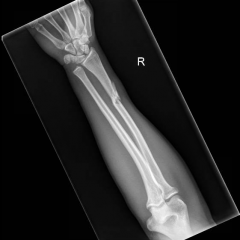

The incidence varies from 0.06 in Africans to 76. No additional incidence was seen at age one.

DDH has a spectrum that ranges from mild hip instability, which resolves spontaneously to dislocation, which needs surgery. In a prospective study by M Kokavec & Bialik V, the sonographic incidence is about 69., but most of them self resolve in about 6 to 8 weeks, leaving 4., which requires some form of treatment. The incidence varies with age at diagnosis, race, and modality by which diagnosis was made. Prematurity is not associated with increased risk. It also increases the risk of other abnormalities like Metatarsus adducts, congenital muscular torticollis, and congenital knee dislocation. Any physical limitation(LGA, oligohydramnios, twins) in utero can contribute to DDH.Many international societies like AAP(American academy of pediatrics, Pediatric Orthopaedic Society of North America(POSNA), International hip dysplasia recommend hip-healthy swaddling. Swaddling in the adducted and extended position explains the increased incidence in specific populations including American Indians, Japanese and Turkish infants.also suggested IL6 and TGFB1(transforming growth factor-beta 1 or TGF-β1) are the two pro-inflammatory cytokines involved in the pathogenesis of Osteoarthritis, may be associated with DDH in the caucasian population. The risk of recurrence is high approximately 6%. Robert et al. Family history: Many genes have postulated in the Asian population: COL2A1, DKK1, HOXB9, HOXD9, WISP3.The procedures that decrease the time spent in the breech Position, like the external cephalic version and pre-labor CS, reduce the risk for DDH. Breech position in the last trimester is the most significant risk factor for DDH.The odds ratio for the female sex is 4.14 (3.0 to 5.7). The increased incidence is probably due to ligamentous laxity from maternal hormones. Female sex: Approximately 4 times that of boys.The following are the risk factors for DDH include female sex, first-born infant, breech positioning in the third trimester, swaddling, postmaturity, LGA, conditions causing limited in utero space, and family history. Many genetic loci have been identified in familial cases.Įarly diagnosis and treatment are rewarding to prevent residual DDH, which causes limp, and or early osteoarthritis. This article is focused on healthy babies with DDH, rather than genetic or syndromes which causes teratologic or neuromuscular dysplasia. Multifactorial in nature, a combination of genetic, environmental, and mechanical factors plays a role. Presentation varies from minor hip instability to frank dislocation. Developmental will be more accurate as it explains the broad spectrum of abnormalities in the hip joint. Previously referred to as "congenital dislocation of the hip," the term developmental is preferred since not all are present or are identified at birth. Review the management options available for DDH.ĭevelopmental dysplasia of the hip (DDH) occurs due to an abnormal hip development, which presents in infancy or early childhood with a spectrum ranging from dysplasia to dislocation of the hip joint.Review the risk factors for the early identification of DDH.This activity reviews the evaluation and treatment of developmental dysplasia of the hip and highlights the role of the interprofessional team in evaluating and treating patients with this condition. Early diagnosis and management will prevent long term complications like persistent dislocation and early hip osteoarthritis. DDH (developmental dysplasia of the hip ) is a disorder that is due to abnormal development of acetabulum with or without hip dislocation.


 0 kommentar(er)
0 kommentar(er)
